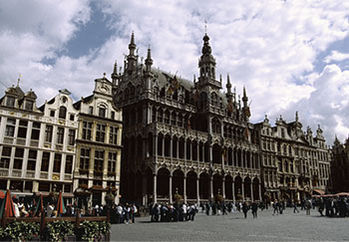Funding the cooperation
Within the framework of the European Research Area (ERA), scientific cooperation with Belgium largely takes place in direct contact between researchers and research institutions, without the need for special state-supported contact initiation. One of the focus areas for joint activities is the development and expansion of networks.
Political framework
In 2016, Belgium invested 2.49% of its GDP (a historic high for Belgium) in R&D1. This put Belgium above the EU average of 2.03%. The R&D share of the business sector is close to 1.73%, relatively high by European standards (EU average of 1.32%).
Belgium ranks 20th in the Global Competitiveness Report 2017-2018. Three key indicators: general conditions (rank 27), efficiency (position 18) and innovation (rank 14) are particularly notable for the below-average conditions.
According to the European Innovation Scoreboard 2018's overall innovation indicator, Belgium's innovation power is above the EU average. Belgium belongs to Group Two of the "Strong Innovators" and ranks eighth in Europe. A particular strength of Belgium, according to the report, is the relative strength of its attractive research system and its corporate investments.
The 2014 National Reform Programme sets Belgium's target at investing 3% of its Gross Domestic Product in research and development (R&D) by 2020. At the national level, a group of experts (High Level Group 3% Belgium) presented a report on the situation of research, technology and innovation back in 2006. The report described the challenges in the context of the Lisbon target (3% share of GDP). It advocated a more integrated research, technology, development and innovation policy ("Belgian Research Area").
The federal structure of Belgium has a strong impact on the design of its research policy and the structure of its research system. Communities and regions have developed their own areas of responibilities in the fields of science, research and innovation. The regions (Flemish Region, Brussels Region and Walloon Region) are primarily responsible for the promotion and design of applied (industrial, technological) research and innovation. The Communities (Flemish Community, French Community and German Community) are responsible for education and (basic) research at universities.
Formally, there are a number of responsible institutions for science, research, technology and innovation. As a result, the decision-making processes in research and innovation policy are complex. At each decision level, there is an advisory body (Science Policy Council) responsible for providing opinions and recommendations to the government. These bodies are made up of personalities from the fields of science, universities, business and society.
Against this background, simplifying institutional responsibilities and improving the coherence and efficiency of research policy is an important objective of the government.
Priorities of the cooperation
Intensive cross-border cooperation takes place within the trinational Euregio Maas-Rhein EMR (with the Netherlands). Funds from the European Structural Funds are available here. A central topic of the Euregio based in Eupen is the area "Economy and Innovation".
The BMBF technical programmes focus on projects involving Belgian institutions in health research and health economics as well as communication and information technologies.
In addition, there is a very intensive cooperation between German and Belgian partners under the current EU Framework Programme for Research and Innovation "Horizon 2020".
1 Source: OECD: Main Science and Technology Indicators (as of 13 August 2018)








